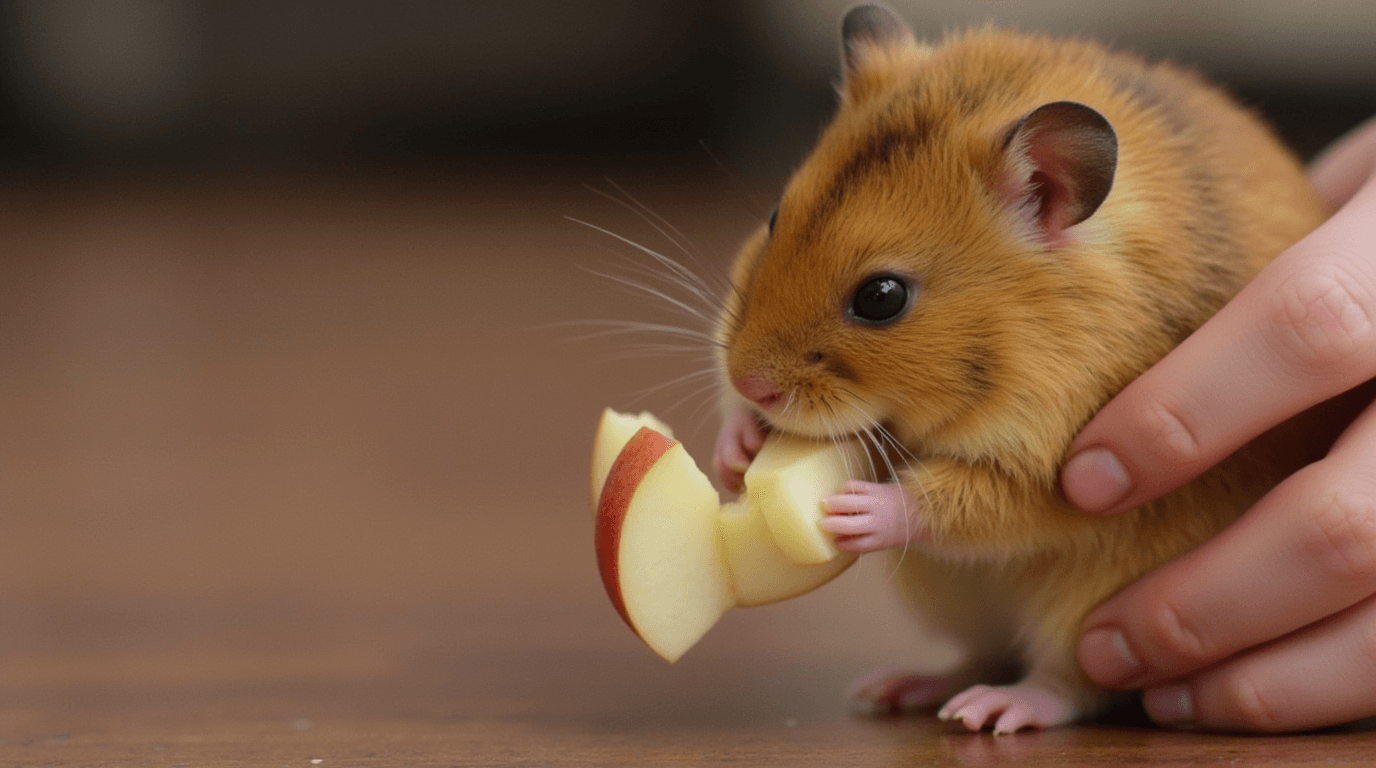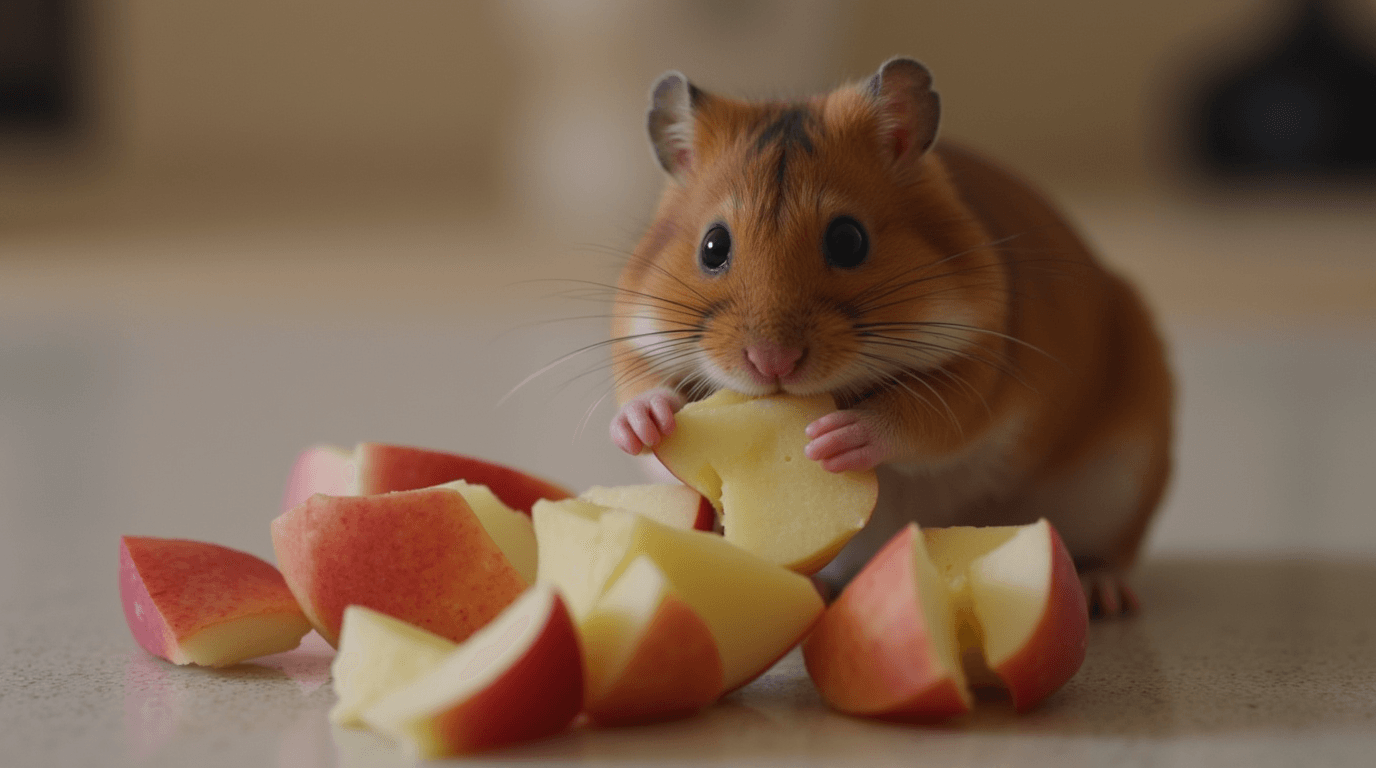Introduction:
Hamsters are among the most popular small pets, known for their adorable looks, playful behavior, and easy care requirements. Whether you’re considering getting a hamster or already have one, this guide will help you learn everything you need to know about hamster care, diet, costs, and more.

What is a Hamster?
Hamsters are small, nocturnal rodents that belong to the Cricetinae subfamily. Originating from regions such as Syria, Greece, and Mongolia, they have become beloved pets worldwide due to their manageable size and relatively low-maintenance care requirements. The most popular pet species include the Syrian hamster (often called the “golden hamster”) and various dwarf hamster breeds such as Roborovski, Campbell’s, and Winter White.
Hamsters are characterized by their small, stout bodies, short legs, and large cheek pouches, which they use to store and transport food. Despite their compact size, they are incredibly active animals that require sufficient space and enrichment to stay healthy and happy.
How Long Do Hamsters Live?
Hamster lifespans can vary based on breed and living conditions. With proper care, a hamster can live longer than average.
Lifespan by breed:
- Syrian hamsters typically live 2 to 3 years, making them one of the longer-lived hamster breeds. These larger hamsters are solitary by nature and need to be housed alone.
- Dwarf hamsters (Campbell, Winter White, and Roborovski) generally live around 1.5 to 2 years, though some Roborovski hamsters may reach 3 years or more with excellent care.
- Chinese hamsters, similar to dwarf hamsters, often live between 2 to 3 years. Their smaller size and unique appearance, with a longer tail compared to other hamsters, make them stand out.
The environment plays a crucial role in determining a hamster’s lifespan. Factors such as proper diet, cage cleanliness, regular exercise, and avoiding stressful conditions can significantly extend a hamster’s life. Genetics also matter; some hamsters may naturally be predisposed to live longer due to their lineage. Keeping the hamster in a calm environment and providing enrichment can also promote a longer and happier life.
Cost of Owning a Hamster
Owning a hamster is generally affordable, but costs can add up when you consider the total investment over time.
The price of a hamster depends on the breed. Syrian hamsters usually cost between $10 and $20, while dwarf hamsters may be slightly cheaper, around $8 to $15. Specialty breeds or rare colorations might cost more, particularly if they come from breeders who focus on particular genetic traits.
Initial and ongoing expenses:
- A quality cage can range from $30 to $100, depending on size and features. Wire cages with deep bases or large plastic enclosures with plenty of ventilation are popular choices. Avoid small cages, as they can lead to stress and health problems.
- Accessories like wheels, water bottles, chew toys, a hideout, and tunnels are essential, costing around $20 to $50. These accessories provide the hamster with exercise, comfort, and entertainment.
- Expect to spend $10 to $20 per month on bedding and food. Bedding should be safe for small animals, such as aspen shavings or paper-based products. Hamster food should include a mix of commercial pellets and fresh fruits and vegetables for a balanced diet.
- Hamsters may not need frequent vet visits, but it’s wise to set aside $50 to $100 for unexpected health issues. Some conditions, like respiratory infections or wet tail, require prompt medical attention.
How to Take Care of a Hamster
Caring for a hamster involves setting up a suitable habitat, providing regular feeding, and occasional handling to build trust.
A spacious cage is essential for a hamster’s well-being. While minimum cage size recommendations vary, aim for at least 360 square inches of floor space, but larger is always better. Multi-level cages can also provide extra enrichment. Adding accessories like a wheel, tunnels, and hideouts will make the enclosure more engaging. The wheel should have a solid surface to avoid injury, and tunnels should be large enough for the hamster to move comfortably.
Daily care tasks include refilling the water bottle, providing fresh food, and spot-cleaning any soiled bedding. Make sure the water bottle is working correctly and that your hamster has access to fresh water at all times. Weekly, clean the cage thoroughly, replacing bedding and sanitizing accessories. Use pet-safe cleaning products to avoid exposing your hamster to harmful chemicals. Regular cleaning helps prevent odors and promotes a healthy environment.

What Do I Feed a Hamster?
Hamsters require a balanced diet that consists of commercial hamster pellets, fresh fruits, and vegetables. They are natural foragers, so providing a variety of foods helps mimic their wild diet.
Safe foods for hamsters:
- Fruits and vegetables like apples (without seeds), carrots, broccoli, and kale can be offered in small amounts. Avoid overfeeding fruits, as the sugar content can lead to weight gain.
- Seeds and nuts such as sunflower seeds and unsalted nuts are good for occasional treats. These should be given sparingly due to their high-fat content.
However, some foods should be avoided:
- Cheese, while technically edible, is best given sparingly because of its high-fat content, which may lead to obesity if overfed.
- Sugary and processed foods are unsuitable for hamsters, as they can cause dental issues and other health concerns.
- Foods like onions, garlic, chocolate, and citrus fruits can be toxic to hamsters and should be avoided entirely.
Fun Activities with Hamsters
Keeping your hamster entertained is important for its mental and physical health. Boredom can lead to destructive behaviors, so make sure to provide engaging activities.
Drawing a hamster can be a fun activity for both kids and adults. Start with a rounded shape for the head, add ears, eyes, a nose, and some whiskers. Then sketch the body with small limbs. Adding fur details and coloring can make your hamster drawing look realistic.
Hamsters enjoy toys that encourage climbing, digging, and gnawing. Use cardboard tubes, wooden chew toys, and exercise wheels to keep them active. Providing a sandbox or a digging box filled with soft material can also allow your hamster to engage in natural behaviors. A healthy hamster is an active one, and daily playtime can improve their quality of life.
Common Questions About Hamster Care
Can I have a hamster in my dorm in Potsdam? Hamster ownership in dormitories depends on the rules of the specific institution. Check with your dorm’s housing office for policies on small pets. If allowed, ensure the hamster’s cage is properly secured, and the environment remains quiet. Keeping the cage in a location with minimal traffic and noise will help reduce stress on the hamster.
Does a hamster eat cheese? While hamsters can eat cheese in very small amounts, it’s not recommended as a regular treat due to its high-fat content. Stick to more suitable treats like fresh fruits and vegetables, given in moderation.
Can a hamster eat apples? Yes, hamsters can eat apples, but only in small pieces and with the seeds removed, as the seeds contain toxic substances. Apples can be a refreshing treat, but limit them to once or twice a week to prevent any digestive issues.

Conclusion
Hamsters make delightful pets, offering companionship and entertainment. With the right care, including a balanced diet, a clean environment, and engaging activities, you can ensure your hamster lives a happy and healthy life. Always be attentive to your hamster’s needs, and enjoy the experience of sharing your home with this charming little animal.
FAQ:
Is hamsters a good pet?
Hamsters make delightful pets for many households. Their small size, playful antics, and manageable care requirements endear them to owners. Ideal for both adults and children, these creatures thrive in well-designed enclosures and benefit from engaging toys. With proper attention, hamsters become charming companions, offering hours of entertainment and joy.
Can hamsters live for 5 years?
While most hamsters have a lifespan of two to three years, certain species, like Syrian hamsters, can occasionally reach five years with optimal care. Providing a balanced diet, a clean habitat, and regular interaction fosters longevity. Genetics also play a vital role, making each hamster’s lifespan uniquely variable and worth cherishing.
Are Syrian hamsters from Syria?
Syrian hamsters, also known as golden hamsters, are indeed native to Syria and parts of the Middle East. These resilient creatures were first discovered in the wild in 1930. Adapted to arid climates, Syrian hamsters are now globally cherished as pets, their origins adding a fascinating layer to their history.
How intelligent are hamsters?
Hamsters possess surprising intelligence for their size. They can recognize their owners, navigate mazes, and even learn simple tricks with patience. Their problem-solving abilities shine when exploring new environments. While not as trainable as dogs, hamsters demonstrate keen instincts and curiosity, making them fascinating and engaging companions for attentive pet owners.
Should you touch a hamster?
Handling hamsters requires care and patience. These delicate creatures should only be touched after building trust, ensuring they feel safe. Start by offering treats and letting them sniff your hand. Sudden movements can stress hamsters, so approach gently. Regular, calm interactions help them grow accustomed to being handled, fostering a strong bond.
What do hamsters eat?
Hamsters thrive on a varied diet of high-quality pellets, seeds, and fresh vegetables. Favorites include carrots, spinach, and occasional fruits like apples. Protein sources such as boiled egg or mealworms can boost their nutrition. Avoid harmful foods like chocolate or citrus. A balanced diet keeps hamsters healthy and energetic.
Do hamsters get happy?
Yes, hamsters exhibit happiness through playful behavior and active exploration. A content hamster often grooms itself, stretches, and runs energetically on its wheel. Providing engaging toys, a clean habitat, and regular interaction enhances their well-being. Observing these tiny creatures express joy is a delightful reward for attentive and caring owners.
How long can a hamster be left alone?
Hamsters can manage being alone for 1-2 days if provided with ample food and fresh water. However, prolonged solitude can lead to stress and neglect. Regularly checking on hamsters, ensuring a clean habitat and engaging toys, helps maintain their well-being, even during brief periods of owner absence.
Should I get a rat or hamster?
Choosing between a rat and hamsters depends on your lifestyle and preferences. Hamsters are solitary, low-maintenance pets ideal for smaller spaces. Rats, on the other hand, are highly social and thrive in pairs, requiring more interaction. Both are intelligent and charming, but their distinct needs suit different pet owners beautifully.
How big can hamsters grow?
The size of hamsters varies by species. Syrian hamsters, the largest, can grow up to 6-7 inches, while dwarf hamsters typically reach 2-4 inches. Genetics, diet, and care influence their growth. Providing a spacious habitat and nutritious food ensures healthy development, allowing these adorable creatures to reach their full potential.
Share your thoughts in the comments below! If you enjoyed this post, consider subscribing to our newsletter for more pet tips, stories and blogs!
